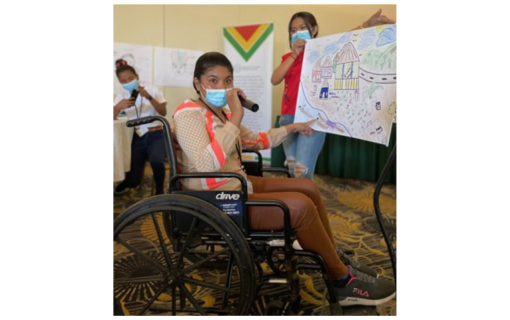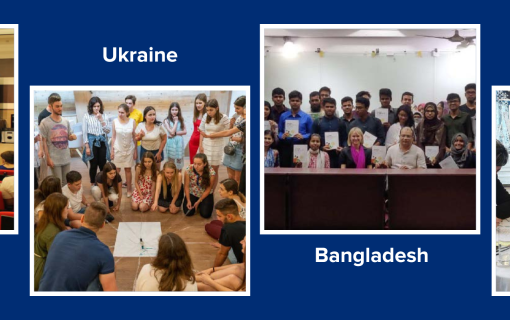Odhikar and IFES Final Report on Election Violence
INTRODUCTION
This report details the findings from the Election Violence Education and Resolution (EVER) program, designed by IFES and implemented by Odhikar for the December 28, 2008 parliamentary election in Bangladesh. The EVER program is designed document accurate information about incidents of election-related violence in a methodologically reliable manner, so that stakeholders in the electoral process could use this information to design and implement effective electoral interventions in a country.
This report is based primarily on Odhikar monitoring of election-related violence from December 14 to 28, 2008. Odhikar focused its EVER monitoring activities in 40 districts under 6 divisions that have a history of electionrelated violence in Bangladesh. Two monitors worked in each of the 40 districts. Odhikar EVER monitors were responsible for identifying and gathering key information on incidents of election-related violence within each district, as well as tensions, potential for violence, and peace initiatives. The monitors were trained in the EVER methodology which requires multiple sources to verify incidents of election-related violence.
The Odhikar EVER project in Bangladesh provided accurate and timely data on patterns of election violence during the campaign period to the public, political parties, election and security officials, and other stakeholders in Bangladesh to help them develop strategies to mitigate such incidents. A total of 110 incidents of election-related violence were recorded and verified by EVER monitors during this period. The following districts were monitored:
Name of the Division
Name of the District
Dhaka
Gazipur, Munshigonj, Narayangonj, Mymenshing, Rajbari, Kishoregonj, Tangail and Netrokona
Chittagong
Brahmanbaria, Comilla, Feni, Laxmipur, Noakhali, Chittagong, Cox’s Bazar, Rangamati and Bandarban.
Rajshahi
Panchagarh, Thakurgaon, Dinajpur, Kurigram, Lalmonirhat, Gaibandha, Chapainawabganj, Naogaon, Rajshahi, Pabna and Sirajgonj.
Khulna
Khulna, Satkhira, Jessore, Jhenaidah and Kushtia.
Barisal
Barisal, Patuakhali, Jhalokati and Pirojpur.
Sylhet
Sunamgonj, Sylhet and Moulavibazar.
Key Findings
- A total of 110 incidents of election-related violence were recorded during the period covered by the monitoring. Most of the violence took place on 19 and 25 December. There were 13 incidents that occurred on each of these dates. Most of the violence observed was political party-related, frequently involving clashes between political party supporters and activists.
- Supporters/activists of the Awami League and BNP were the most active participants in the violence that took place during monitoring period. The Awami League was directly responsible for the violence in 42 incidents and was also involved as secondary perpetrator in two incidents, while the BNP was directly involved in 28 incidents as the primary perpetrator group and also responsible as secondary perpetrator in 19 indents of violence recorded during the monitoring.
- Rajshahi was the division where the highest number of incidents (29 incidents) occurred during the monitoring period while Chittagong division took second place with 24 incidents. Dhaka, Barisal, Khulna and Sylhet divisions saw a fewer number of incidents.
- In addition to clashes between supporters and activists of the two electoral alliances, violence during this reporting period also involved various levels of property damage, both to private and political party property.
- Five individual districts had the highest number of incidents which occurred during this period: Pabna (11 incidents), Kishorgonj (8 incidents), Brahmanbaria (7 incidents), Barisal and Moulavibazar (6 each). In each of these, the incidents were largely characterized by cycles of back-and-forth attack between BNP and Awami League.
- It is somewhat difficult to compare the violence that took place during this monitoring period with the violence that took place before the scheduled elections for 2006. In 2006, 45 constituencies were covered under 33 districts, while 40 districts out of 64 were covered this time. In addition, most of the monitoring in 2006 took place before the start of the official campaign period while this year the monitoring took place completely within the campaign period. Finally, the State of Emergency prior to this 2008 election helped to reduce the number of incidents of violence. Thus, there are limitations to the comparisons that can be made between the two monitoring periods. Nonetheless, it is notable that some of the same constituencies that had relatively high numbers of incidents in 2006 also were characterized by relatively high numbers of incidents during this monitoring period. Specifically, Patuakhali-1 and Cox’s Bazar-1 were found to be constituencies where large number of incidents of violence took place during the monitoring period in 2008 as well as in 2006. This suggests that these constituencies should be targeted for peace-building initiatives so that the level of election-related violence in these constituencies decreases in future elections.
- In total, 336 people were wounded in the recorded incidents during this monitoring period and there were no deaths in any reported incident (in comparison to 2006 when 20 people were recorded as killed during the monitoring period). In this monitoring period, a total of 89 persons were recorded as wounded in Chittagong division, 79 in Rajshahi, 57 in Dhaka, 47 in Barisal, 38 in Sylhet division, and 26 in Khulna division.
- It is notable that law enforcement agencies were recorded as perpetrators only in three incidents recorded during this reporting period (in comparison to 2006, while several number of incidents where law enforcement agencies were recorded as perpetrators during the monitoring period). Law enforcement agencies were found to be active and tolerant in the vast majority of the monitored areas. Police response to election-related violence seems to have improved during the State of Emergency. It shows that police behavior had been improved and they responded better while maintaining law and order situation during this reporting period.
Peace initiatives
In 24 of the monitored districts, peace initiatives were taken by the government, various non-political cultural groups, political parties and civil society. The peace initiatives that various social and cultural organisations, political parties and local administrations undertook were mostly well-ordered rallies and processions. In many of these districts, such peace initiatives had some impact on reducing the potential for violence or level of tension. One of the major peace initiatives was intended to discourage voters from voting for candidates who had been against the Liberation War of Bangladesh. Voters were also encouraged to stamp on the ‘No’ vote if it seemed appropriate5. Moreover, various cultural fronts organised campaigns for voter education and awareness program. In the remaining 16 districts, there were no peace initiatives.








